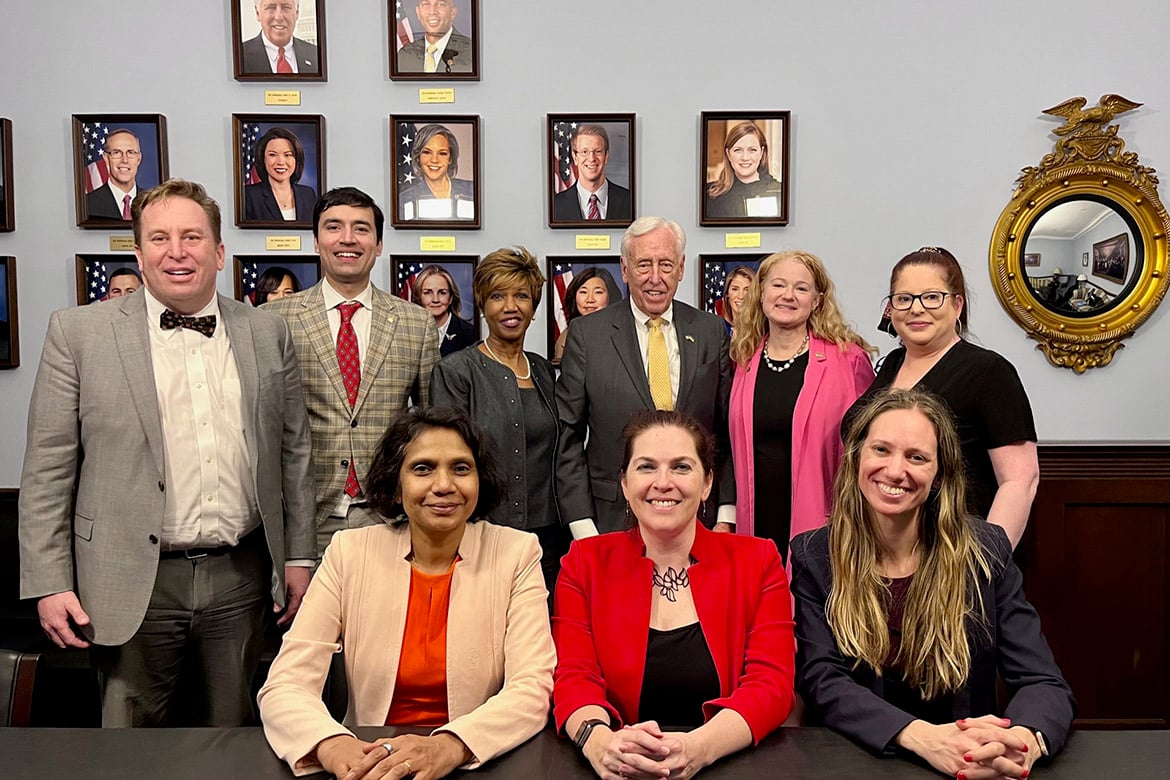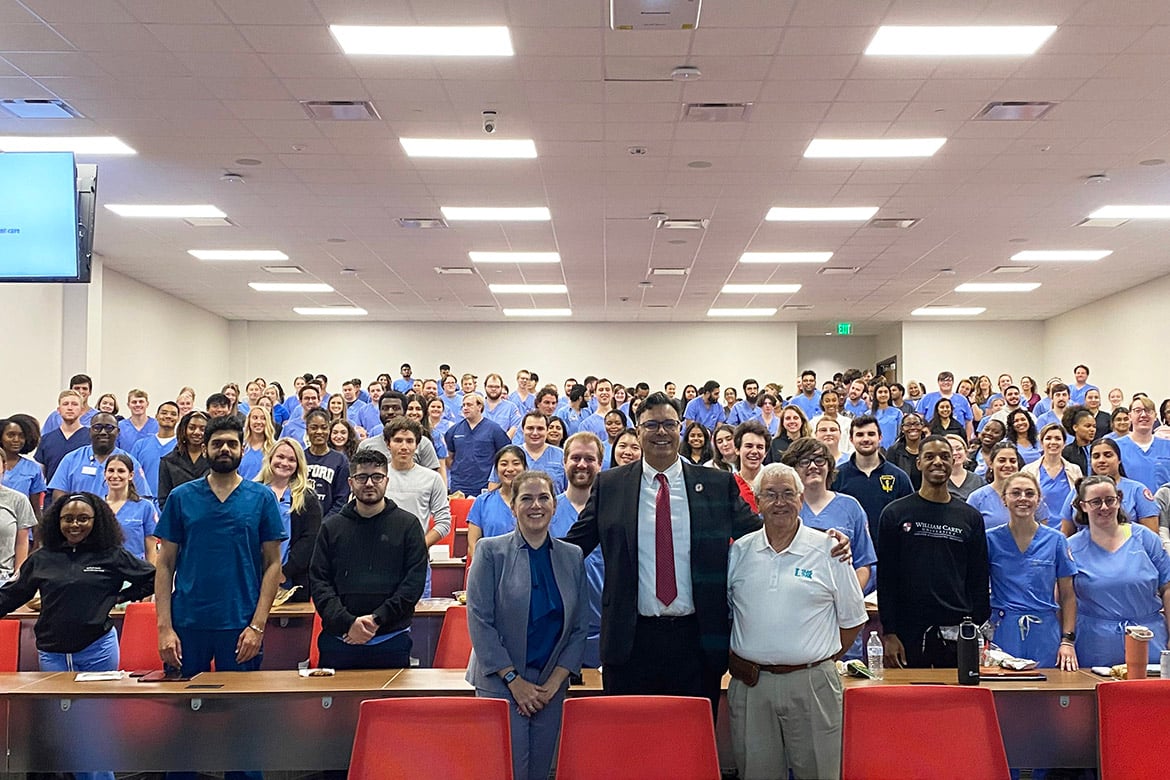Contents
Elections will be held at the Annual Meeting of the House of Delegates on June 11, 2024.
Officers and seven councils are elected by the American Medical Association House of Delegates (HOD) at the Annual Meeting. The elections are conducted during a special election session under the supervision of the Committee on Rules and Credentials and the chief teller, who are appointed by the speakers. The speaker and vice speaker are responsible for overall administration of the elections. Voting is conducted by secret ballot.
Ilse R. Levin, DO, MPHTM
Candidate for AMA Board of Trustees
Term
2024-2028
Medicare payment reform
As a full-time practicing hospital-based physician, Dr. Levin feels the effects of lack of access to care daily. Dr. Levin has frequently spoken about the demands on our health care system as patients find it harder and harder to receive timely treatment under Medicare. Hospitals are overwhelmed by patients who delay receiving health care due to lack of access.
Since 2001 Medicare reimbursement rates for physicians have not received a significant increase, and when adjusting for inflation, Medicare rates have decreased by thirty percent for physicians. On Jan. 1, 2024, a 3.37 percent cut to physician reimbursement for Medicare was passed. Despite the widespread bipartisan support to block the cuts, the current proposed appropriations package would only rollback the cuts by 1.68 percent. This, in addition to the 2 percent cuts from 2023, is essentially a squeeze on the health care system. The annual cycle of pay cuts and patches, without enacting permanent reforms, has continued to threaten patient access to care. As physicians are faced with reimbursement rates that have not increased in over 20 years, we are forced to limit their ability to take on new Medicare patients.
As the U.S. population is older today than it has ever been, the number of Americans aged 65 or older is projected to increase by 47 percent from 2022 to 2050. In addition, the demand for elder care is expected to rise sharply. According to the Population Reference Bureau, social security and Medicare expenditures are also expected to rise from 9.1 percent of the gross domestic product in 2023 to 11.5 percent by 2035.
The Medicare cuts impact access to high quality care for the population, just when people need the care the most. The first populations affected by the Medicare cuts are the most vulnerable, those in rural and underserved areas. Small independent practices could be forced to close or no longer see Medicare patients; often these are the very practices that are in areas vulnerable to becoming a health desert. It risks people choosing not to enter the fields of geriatrics and geriatric psychiatry among others, which further risks access to care. To be clear, threats to access to care due to Medicare reimbursement threaten the health care system. This leads to a trickle-down effect of sicker patients, requiring higher levels of care and stressing both in- and out- patient system services further.
Dr. Levin will continue to advocate strongly for Medicare payment reform and will not stop until a permanent fix is achieved.
National advocacy
The opioid epidemic
Dr. Levin has spent years working to fight the opioid epidemic, from her work with the American Society of Addiction Medicine to her work with the AMA, combating the stigma of addiction, working to make naloxone widely available to the public, and increasing access to addiction medicine charts so that the entire medical team can treat patients properly without blinders. Dr. Levin worked to remove prior authorizations that created dangerous obstacles to treating her patients on Suboxone, and removing X wavers that severely limited the number of physicians who could prescribe Suboxone.
In 2011 the CDC declared overdoses from opiates an epidemic, leading to a nationwide push to decrease opiate prescribing. Since then, opioid prescriptions have decreased annually, but deaths have continued to rise from opiates at a staggering rate as use moved from prescription based to street based.
In 2023 more than 112,000 people died by overdose in the U.S., with the main driver of deaths being synthetic opiates other than methadone (primarily fentanyl). The U.S. has made significant changes in our approach to controlled substance use since recognizing the epidemic:
- State prescription drug monitoring programs are highly utilized at over a billion queries per year
- Opioid prescribing has decreased by almost 50 percent nationally, use of buprenorphine has spread both in prescribing and ease of use with patients
- Naloxone prescriptions have increased more than 200 percent since 2018
However, reductions in opioid prescribing have been inversely proportional to opioid overdose deaths, largely due to the transition to street drugs like synthetic opiates. Drug overdose deaths are disproportionately impacting American Indians and Alaska Natives, and older Black men, while pregnant women continue to face increasing barriers to accessing care.
The emerging threat of xylazine (a nonopioid sedative) combined with fentanyl poses a dangerous emerging threat in the U.S. As physicians, many of us will see patients who are using drugs. While cessation is the goal, all patients should be educated on harm reduction. Increasing access to evidence-based treatment for drug and alcohol use is imperative to reduce morbidity and mortality. This includes:
- Increasing access to mental health and addiction treatment and decreasing barriers such as cost
- Increasing access to materials that reduce harm
- Removing barriers to evidence-based care for incarcerated populations
- Working with key stakeholders in the communities to decrease stigma that often hinders treatment
Disinformation and misinformation
Having been elected to the AMA Board of Trustees in 2020, at the beginning of the COVID-19 pandemic, Dr. Levin saw first-hand how the spread of misinformation and disinformation harmed efforts to control the spread of the disease. During her first term on the Board, Dr. Levin used her expertise in many AMA and other media events to educate the public.
We as physicians are in a constant battle against misinformation (unintentional) and disinformation (intentional). We live in a world of mass media: from the internet at our fingertips, to news stations fighting for viewers, to the politicizing of science. Patients are inundated with information, but often don't know how to discern fact from fiction, good advice from bad. To complicate matters further, of 7000 scientists surveyed by the journal Nature, a third admitted to plagiarism and data falsification. Not surprisingly to physicians, the most popular disinformation in medicine was in the subject of vaccines. The World Health Organization estimates that vaccines save as many as three million lives each year, yet now we are seeing increasing outbreaks of measles, among other preventable diseases; as we know, much of this is due to the fabricated article that claimed that the MMR vaccine caused autism.
When people cannot identify reliable resources, the health of the population suffers. Nowhere was this more evident than during the COVID-19 pandemic. Especially dangerous—and disappointing—was the disinformation that came from fellow physicians and scientists. Over the past two years childhood vaccinations in the U.S. have fallen. COVID vaccination coverage has decreased since the first round of vaccines, with only 13.1 percent of children and 22.3 percent of adults in the U.S. having received the most recent COVID-19 booster vaccine per the CDC. Only 50.8 percent of children and 47.8 percent of adults in the U.S. received the flu vaccine this year.
It is not just vaccines that are affected by misinformation and disinformation. If patients don’t trust their doctors, it is much harder to address other health problems as well. The AMA can provide a vital resource to both patients and physicians on up-to-date and accurate medical information, whether it is treatment modalities, vaccines, or how artificial intelligence is used in health care. Education is power, and the power to educate ourselves and our patients on correct information is an important aspect of improving public health.
Increasing AMA membership
As a membership organization, the AMA is dependent on the voices of all physicians. Since my election to the Board of Trustees, increasing membership outreach, especially among groups that have not traditionally been active in our AMA has been a priority of mine.
As the first osteopathic physician elected to the Board, I have worked to strengthen the relationship between the American Medical Association and the American Osteopathic Association. I helped in founding the Osteopathic Physician Caucus at the AMA. I have visited one-third of the osteopathic medical schools in the U.S. from Pennsylvania to Mississippi to California—speaking to deans, faculty, and medical students— resulting in significant increases in their membership to the AMA. Many of these medical schools, located in rural parts of the country, have developed innovative and interesting programs to address the challenges facing health care deserts in these isolated communities, including one, Oklahoma State University, the U.S. first medical school to partner with a tribal nation. Recently I had the honor of visiting Kentucky College of Osteopathic Medicine, where I saw the medical school actively working to improve health care in Appalachia.
While meeting with medical schools is an effective way to increase our membership footprint through a grassroots effort, it also has provided me with a better education of the needs of communities that have often struggled to have their voice heard.
Speaking to medical students
Additional resources
- Visit the AMA elections page for information on other candidates running for office.
- Find up to date information for the June Annual Meeting of the HOD.





